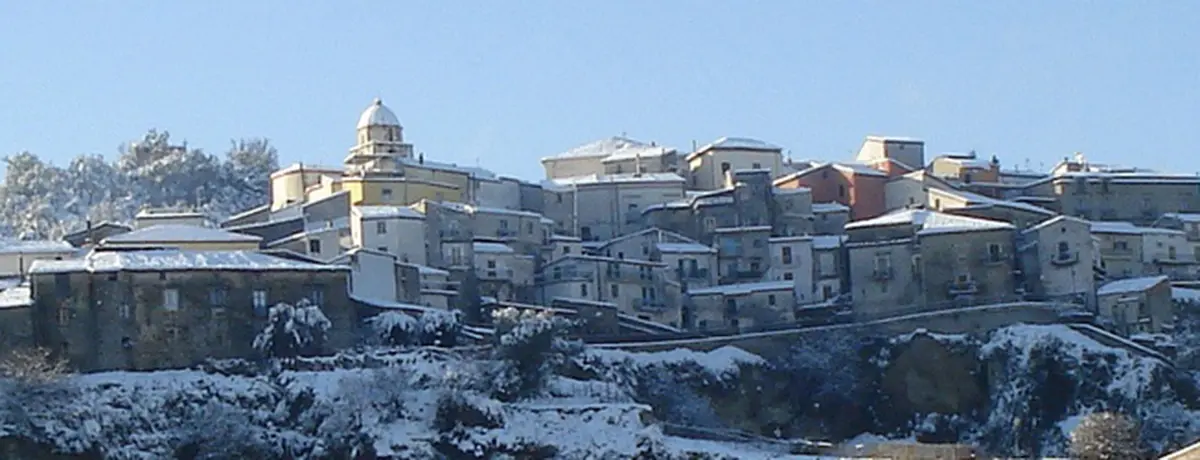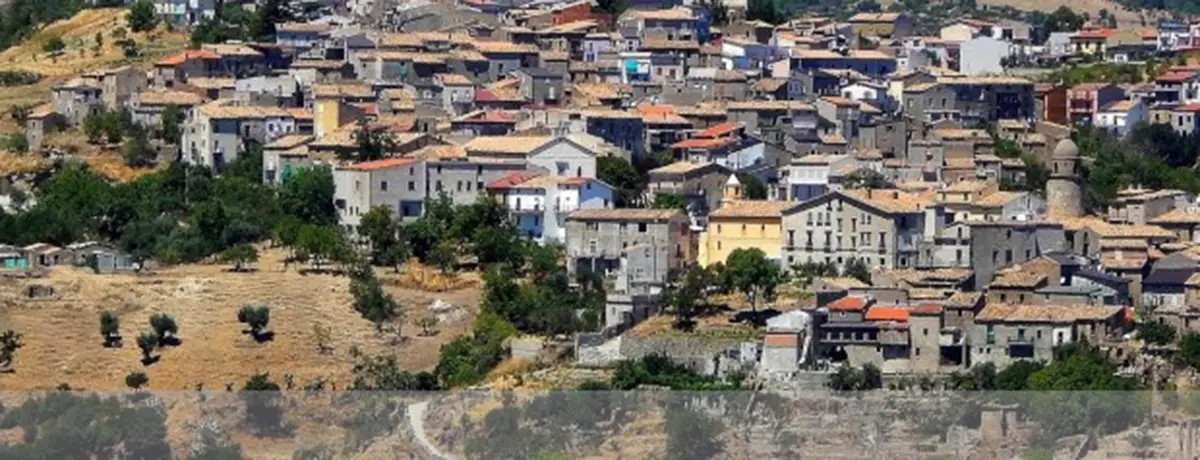Crosia
Crosia, the miracle of the Madonna della Pietà

Town
According to the tradition, Crosia was founded by the companions of Aeneas in 1315 B.C. along the east wall of the Santo Pietro hill. The story tells us that Aeneas, during the journey from his homeland at the mouth of the Tiber, stopped with his fleet in the harbour of Traejs, today known as Trionto.
The loyal subjects, as an act of devotion, gave the city that had just been founded the name of his wife, Kreusa, which transformed to become present day Crosia.
During the days of the miracle, thousands of worshippers witnessed phenomena that even today still remain unexplained, including a white light moving quickly in the dark.
The following historical and artistic monuments are of great interest and tourist attraction: the old town centre with its typical narrow streets and ancient buildings; the Castello Feudale di Mirto (early XVII century); the Chiesa Matrice or main church dedicated to S. Michele Arcangelo (perhaps of the XI century); the Chiesa della Madonna della Pietà ("Mater Dolorosa", early XVI century); the system of defensive towers including the Torre di S. Tecla in Contrada Fiumarella (XVI century) and the Torre del Giglio in Contrada Sorrento (mid XV century); the Càsino della Vota, an ancient farmhouse; the Chiesa del Divin Cuore di Gesù in Mirto, with its artistic mosaics.
The district of Mirto is a well-known seaside resort of the Ionian Alto Cosentino, rewarded several times with the Green Flag, awarded by Italian paediatricians to the best Italian beaches in terms of hygiene, cleanliness and safety for children. Mirto’s coast is characterised by a wide beach formed by fine white sand and, in some points, stones and rocks, with crystal clear water of an emerald green colour. The beach’s bed descends gently, thus making it suitable for families with children and swimmers with little experience. The seabed is very beautiful, rich of Posidonia, and offers unforgettable experiences to diving and snorkelling enthusiasts. Just behind the beach, on the sand dunes, wild licorice grows; in the past, its roots were harvested and processed. Mirto Crosia's beach is also called "Centofontane". It is composed of segments with equipped areas which alternate with a public beach and is Mirto Crosia’s summer lounge, offering high quality standards. Recently, parking spaces were added, to allow guests to visit the beaches while offering a safe and convenient place to park.
The miracle of the apparitions
Crosia has been infused with energy following the extraordinary and mysterious events occurring in the Chiesetta della Pietà and that have involved scientists, theologians and thousands of pilgrims.
On 23 May 1987, a young local boy then fourteen, together with a friend, went inside what was then a little de-consecrated church, used as a stable and almost completely in ruins. The young man came in closer and saw that an old statue of the Madonna, abandoned in the niche of the central altar, covered by a thick dust, was in tears. The two young boys fled in terror toward the town, where they told everyone what they experienced. In a short time, an increasingly large crowd who wanted to witness the miracle gathered in front of the Church. During those days, thousands of worshippers continued waiting for the miracle, witnessing phenomena that still remain unexplained today, including a white light that moved quickly in the dark; the light was well-defined and similar to a comet that in night sky above the valley and overlooking the village, created a series of figures. Crosia became the destination of worshippers but also of many inquisitive onlookers and even UFO enthusiasts. The Church was thus renovated and restored for worship and the statue of the Madonna della Pietà began to attract the attention of ever-increasing crowds. During the course of the nineties, Crosia's apparitions became the subject of media interest in Italy, so much so that in November 1992 Enzo Biagi took care of the Marian apparitions by interviewing the little boy in his first appearance, aired on Rai networks under the “Una Storia” programme.
Feudal Castle of Mirto
The imposing castle was the heart of the vast fief of Crosia which included Calopezzati, Caloveto, Campana, Mandatoriccio, Bocchigliero and Pietrapaola. The Castello di Mirto (Mirto’s castle) is nothing more than a wonderful "masseria" (farm) built on the hill of the district of Mirto; the centre of an immense fief. The vastness of cultivation areas with olive groves resulted in a production of oil of hundreds of quintals, much of which was exported, with the need to implement facilities for storage and pressing of the olives. In the same way, the massive production of cereals and their marketing imposed the construction of huge warehouses especially in Mirto, which was the heart of the production area. Due to these needs, the Castle was built with the main manor house which is still visible today as well as the farmer’s house, houses for service staff and workmen employed, sheds and stables, warehouses and a large room where seasonal workers were housed. The ever-increasing needs imposed the rise of new constructions around the court until the castle took on its present size and appearance.
Casìno della Vota
Similar in structure to Mirto's castle, the "càsino" 'a vota, an ancient self-sufficient farm of Crosia's noble families, was a great winter residence, as evidenced by the name, which means "località riparata” (protected place). Its produce was mainly olives, as can be seen by the presence of trappeti (oil stone mills) that, despite the state of complete abandonment of the whole estate, have been preserved in time. Also in Vota there was a church that, contrary to that of the Mirto’s castle, was annexed to the master's wing and separate from that of "servants".
Gastronomy
Like all Calabrian towns, Mirto-Crosia also maintains its culinary traditions. A dish of ancient origins is the “carna salata”; it is made with bacon, pork ribs and rinds that after being cut to pieces are abundantly salted, then sprinkled with chilli powder and natural aromas to be finally preserved in earthenware vases. The dish was born for farmers who had no time to come home for lunch and needed preserved food. Starters include dishes such as “maccarruni a ferriett” which is home-made fusilli pasta. Not to be missed are the tasty sausages, as "sazizza" (sausage), "suppressata" (soppressata, a typical type of salami), "capeccodd" (capicollo, pork meat taken from the neck), the “nnuglia" which is a salami prepared with offal of pork, especially liver, spleen and lungs, together with spices and aromatic herbs.
Useful information
What to know about Crosia
Events
There are 2 events scheduled.
Where to Sleep
There are 11 available accommodations.
Travel Ideas
There are 1 travel ideas.
Infopoint Crosia
Viale Sant'Andrea, Crosia
No result







